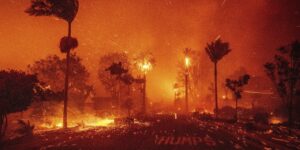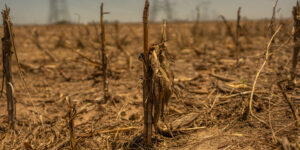
The rising toll of natural catastrophe claims on U.S. property/casualty insurers underscores the growing need to understand these perils from the policy to the portfolio level. A new series of white papers from Verisk goes in depth on the effects of climate change and strategies for insurers to respond three of the major natural hazards.
Severe thunderstorms and hail: These events have generated more than half of annual reported U.S. insured losses since 1985, according to Verisk data. The overall trend has been toward increasing frequency. Large hail outbreaks can cause more than $25 in million Insured losses, while smaller events can chip away at a portfolio. And because hail damage to roofs may go undetected for months or years, it’s critical for insurers to proactively address this potentially hidden risk.
Wildfire risk and mitigation: Rising temperatures, severe droughts, and changing precipitation patterns are turning wildfire “seasons” into a near-year-round phenomenon. Continued development of high-risk areas—wildland-urban interface (WUI) and intermix WUI areas—meanwhile raises the potential for loss exposure. Insurers have incurred billions of dollars in claims as more fires produce worsening damage. Furthermore, California insurers face new regulatory measures to address the rating of property coverage in wildfire-prone areas. The new regulation will require insurers to account for and reflect specific wildfire mitigation factors in their rating plans filed with the California Department of Insurance (CDI) and any related wildfire risk models used in connection with such rating plans. Verisk provides tailored wildfire risk and mitigation solutions to support carriers with their regulatory compliance needs in California and other western states.
Hurricanes: Climate indicators point to more frequent and severe tropical cyclones through much of the 21st century, driven by effects from forecasted increases in atmospheric CO2. Verisk’s U.S. hurricane climate change projections under a net zero global CO2 emissions scenario by 2050 would still raise U.S. insurers’ average annual losses around 25% by 2050 compared with 2021. These trends have severe implications on the ground—for example in Florida, where Hurricane Ian showed a potential example of storms to come. It’s a challenge for insurers navigating the peril itself and the complex market, legal, and regulatory environments that result.
In the face of these and other natural hazards, insurers need current, actionable data, available early in the workflow, to help guide underwriting and pricing and keep policyholders well protected in a more perilous world. From tracking material and labor costs to prioritizing property inspections and refining portfolio risk appetites, the challenges are vast.
Explore specific perils in detail and gain an overview of insights, solutions, and approaches for a warming world in Verisk’s new four-part white paper series. Download any or all of the Ice, Fire, Wind, and Water papers.
Dr. Arindam Samanta, Director, Product Management, Verisk



















 State Farm Pausing Nonrenewals in Compliance With CDI Notice
State Farm Pausing Nonrenewals in Compliance With CDI Notice  New Commercial Auto Exposures: The Evolution of Terror Liability Risk
New Commercial Auto Exposures: The Evolution of Terror Liability Risk  Leading Insurance Innovation in the AI Age (Part 2: Tech Project Pitfalls)
Leading Insurance Innovation in the AI Age (Part 2: Tech Project Pitfalls)  States Push Changes to Driver, Auto Insurance Requirements in 2025
States Push Changes to Driver, Auto Insurance Requirements in 2025 